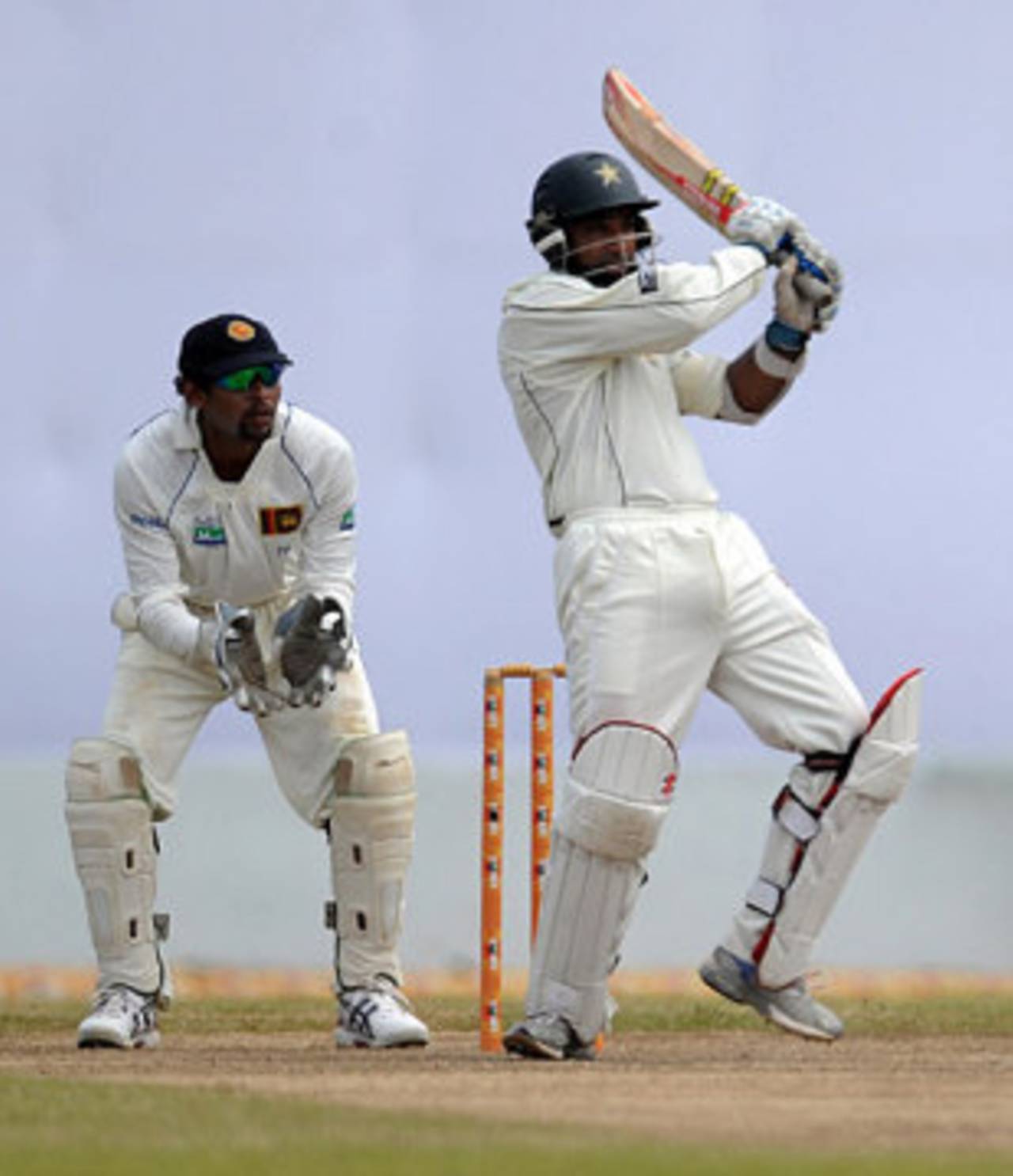Just like old times
By his own admission, Mohammad Yousuf was not at his fittest best and had little batting practice before coming to Galle and scoring a serene century
Sidharth Monga in Galle
05-Jul-2009

Return of the King • AFP
It was as if nothing had changed. When the third wicket fell, the No. 5 didn't run out immediately in Twenty20 style. He took his time, stepped over the rope casually, past the sweaty track pants and shirts left to dry just outside the boundary, played a couple of air-drives, jogged for a few steps (feet going high behind him but never looking hurried), then walked up to the pitch. If he was anxious, which he was, he didn't show it.
The last time this entry was seen in Tests was in December 2007, against India. For the last year and a half, Mohammad Yousuf's name has resonated in media releases and legal notices from ICL and IPL, but not in official cricket. "Beech mein lagta tha ab main bas finish [It used to feel like my career was over]," Yousuf said.
He doesn't want to talk about that period now. He said he sees it as destiny, and has moved on. And when he moved on, back to a Test field, his side was at 55 for 3, in the danger of squandering a stupendous bowling effort on the first day. Soon it became 80 for 4, but with Yousuf comes serenity.
The first few overs were edgy. Thilan Thushara moved the ball in and registered strong appeals against him. Still somehow it didn't seem we were witnessing a batsman who used to think his career was over, and who was now looking to rescue his team, against a team he had never scored a century against. "I have come back after such a long time - a year and seven months. There was pressure, it was difficult, and the team needed a big innings too."
Nor had the wicket become very easy to bat on. Yousuf overcame that period, and went on to show why it is said it's best to get him out early.
Yousuf said he tried to read Ajantha Mendis from the hand. "He is the first bowler in history to bowl like he does. He has so many variations, but I always focus on his hand." That he was reading Mendis well showed in how he could play the cut and late-cut - two of the most dangerous shots to play against Mendis.
He didn't look under pressure through the innings. It was all normal Test cricket, no aerial shot or ill-advised sweep, or premeditated anything. Though, perhaps, this century was premeditated. At 57 he nicked one to his pad and through to Tillakaratne Dilshan, but the umpire didn't see it.
There is no apparent explanation for how he managed to find the touch of old immediately on a pitch where batsmen have generally struggled. During the lay-off he didn't do anything special. "I used to train a bit in the gym," he said. "A bit of running etc, but I didn't have access to the kind of international-level training that happens with the team trainer. So the fitness level was not where it should be."
Humid Galle is not a place to play Test cricket if you know you're not at your fittest. What about batting? "I had played a few matches for my club, that's it." Oh well.
But what about rejoining a team that he had left? How did they react when he came back? "It was not like I was ever out. All of them are my juniors, they respect me. Aisa koi masla nahi tha. [There were no such concerns.]"
Slowly but surely it all came back, as if nothing had changed. Another century, his 24th, his first in and against Sri Lanka, with the same ease. Even the end was not dissimilar: a run-out. The most overwhelming feeling for Yousuf is that of relief. "It's just because I am playing after so long, and the team needed it so bad. This was just the start I needed."
There were two beautiful moments in the day. One when Yousuf reached his century, threw the helmet away, and did his sajda on a hardly lush square. Shoaib Malik, a former captain, went up to him, picked up the helmet for him, and also wiped his forehead for him. And second, when Pakistan came back to bowl just one over to finish the day. Yousuf was stationed at third man, the farthest position from the pavilion. Younis Khan, the captain, waited at the boundary line for a tired Yousuf to amble along and lead the team off the field. It was clear they had accepted, nay, needed him.
Sidharth Monga is a staff writer at Cricinfo